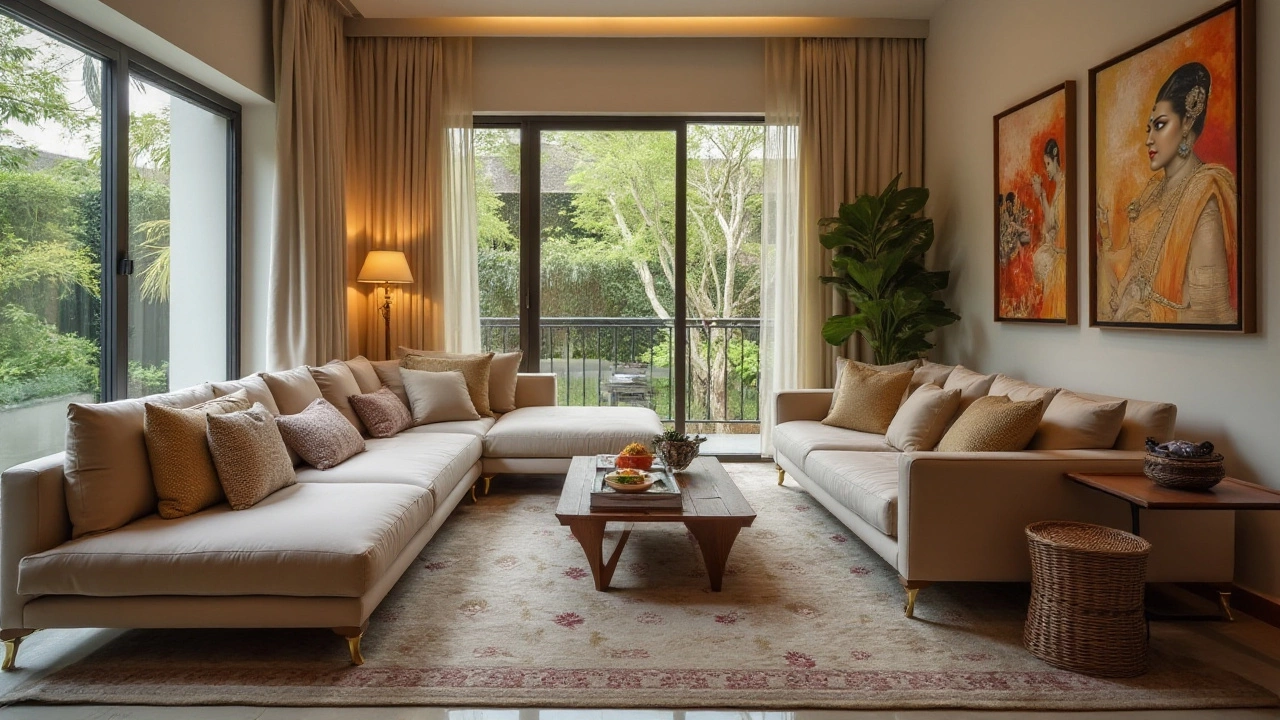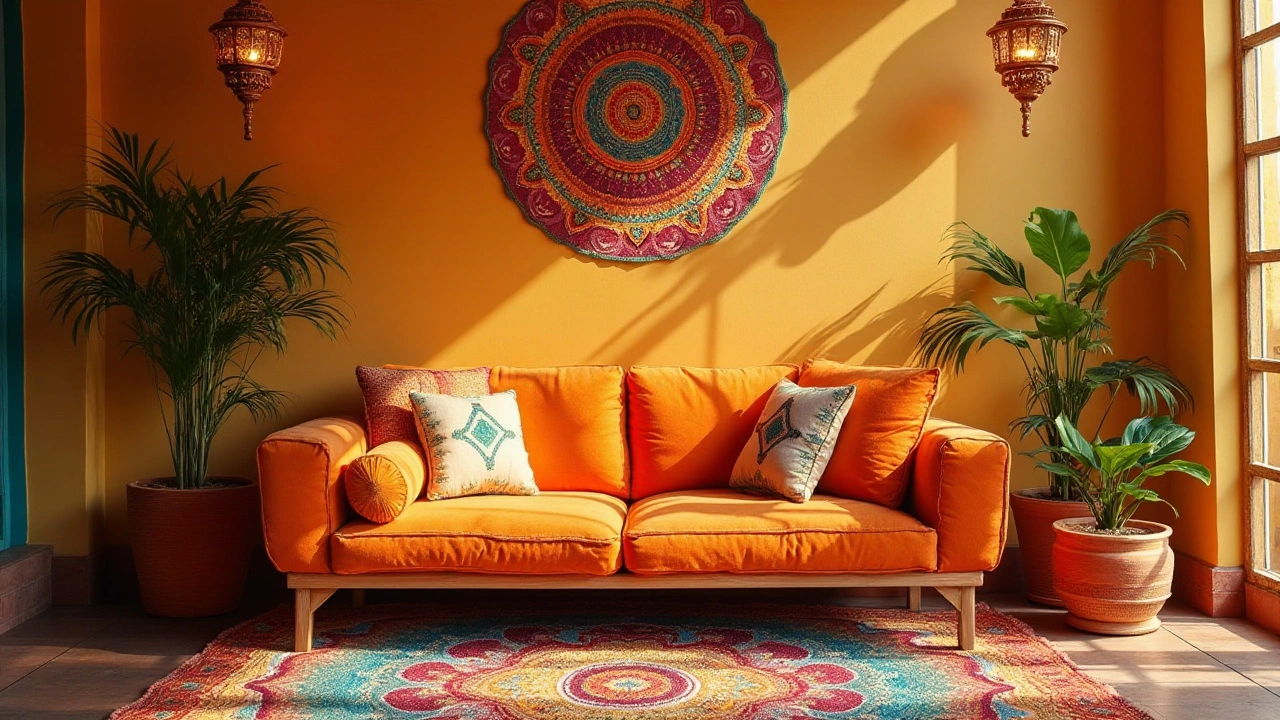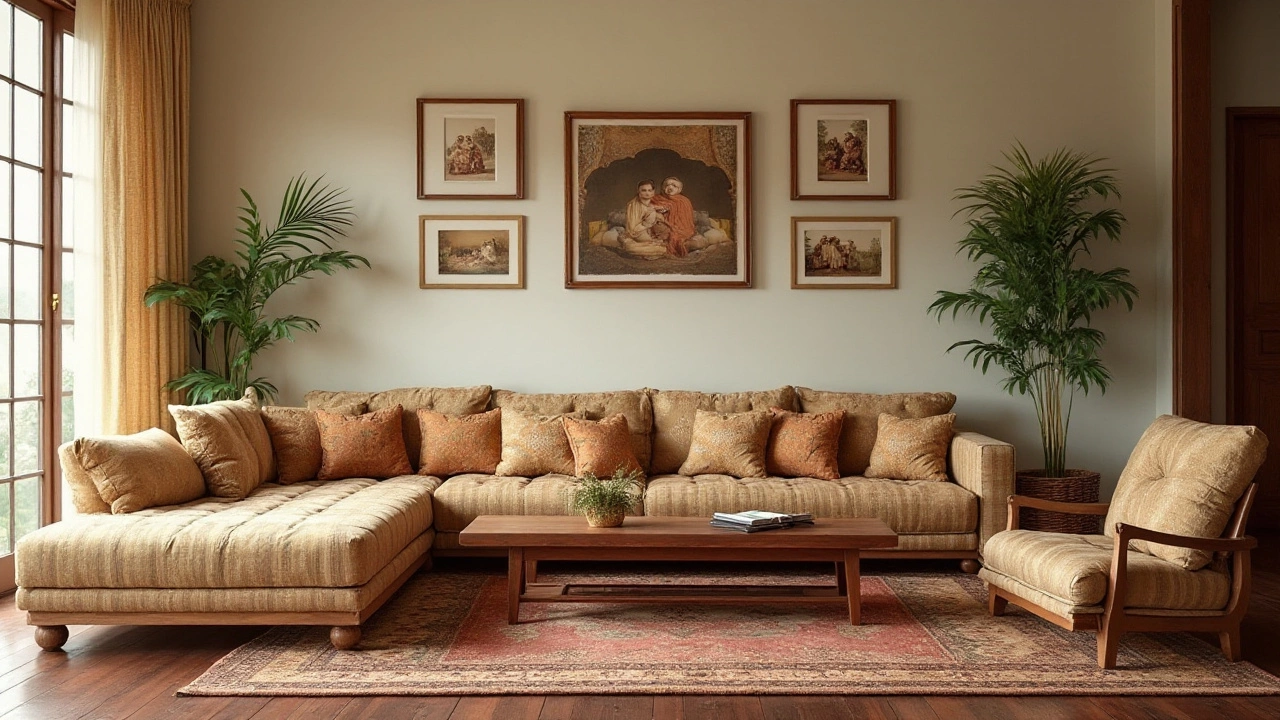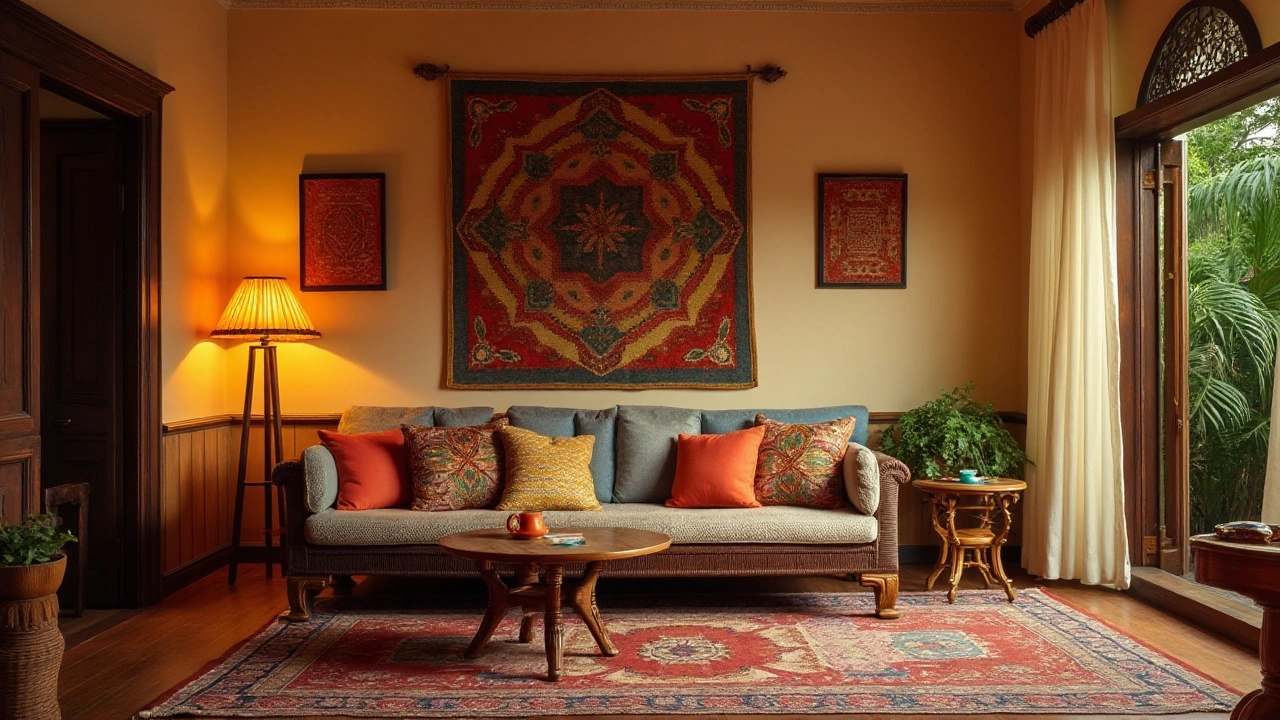When it comes to furnishing your living room, the sofa is often the centerpiece and the most significant investment. Finding the perfect sofa can be daunting, considering the vast array of styles, sizes, and configurations available. A guiding principle known as the 2/3 rule can help you make this choice with confidence. This rule suggests that your sofa should occupy approximately two-thirds of the room’s designated seating area to ensure a harmonious and balanced look.
Utilizing the 2/3 rule can significantly impact the aesthetic and functional aspects of your living room. It not only makes your space visually pleasing but also leaves enough room for movement and additional furniture pieces. Whether you're redesigning or setting up a new home, understanding and applying this rule could be the key to achieving a comfortable and stylish living space.
- Understanding the 2/3 Rule
- Benefits of the 2/3 Rule
- Practical Examples and Tips
- Common Mistakes to Avoid
Understanding the 2/3 Rule
The 2/3 rule is a delightful nugget of interior design wisdom that acts as a guidepost when arranging your living space. It is built on a simple premise: proportion and balance matter, particularly when it comes to large furniture pieces such as sofas. The concept suggests that your sofa should occupy roughly two-thirds of a room's seating area, establishing a sense of equilibrium in the space. This rule is practical in creating an airy yet cozy atmosphere, promoting a seamless visual flow that neither overcrowds nor underutilizes the available area. By adhering to this guideline, homeowners can ensure that their seating arrangements integrate well with other room elements, allowing decorative accents and functional furniture to coexist harmoniously.
In the language of design, proportion is king. The 2/3 rule has its origins in the golden ratio—a mathematical principle dating back to the Renaissance, used by great artists like Da Vinci to achieve aesthetic perfection. This same ratio speaks to human psychology, guiding our instincts about beauty and balance. Modern interior designers employ similar principles, though with tweaks to suit contemporary spaces. For instance, unlike ancient art, applying this rule to furniture selection is plain pragmatic—it accounts for real-life dynamics such as circulation pathways, door accessibility, and maximizing the sense of openness, particularly in restricted spaces. Think about narrow city apartments or a bustling family home where room layout can make or break comfort levels.
Famed designer Nate Berkus once noted, "Your home should tell the story of who you are and be a collection of what you love." By following the 2/3 rule, your living room design feels intentional, reflecting personal style while embracing functionality.
The advantages of adhering to this rule extend beyond aesthetics and practicality. It can also inform decisions around other design elements, such as ensuring the furniture does not obstruct natural lighting, which can make smaller areas appear larger. When sized properly, sofas contribute to optimal sound dynamics within a room, reducing echo and creating more intimate conversation zones, thanks to strategic positioning. This measured approach can adapt across various interior styles, from minimalist modern dents to rustic chic, demonstrating its flexibility and universal application. Ultimately, the 2/3 rule is less about strict mathematical adherence and more about achieving a restful environment.

Benefits of the 2/3 Rule
Embracing the 2/3 rule when choosing a sofa for your living space can transform your home decor experience. This rule isn't just an arbitrary guideline; it's rooted in sound aesthetic principles that harmonize your interior design efforts. One of the primary benefits of the 2/3 rule is its capability to create a balanced visual appeal. By ensuring your sofa occupies two-thirds of the available seating area, you avoid overwhelming the room with furniture that feels cumbersome. Instead, this rule facilitates a flowing layout that allows other furniture pieces, like coffee tables or side chairs, to complement rather than compete.
Beyond aesthetics, the 2/3 rule enhances the functionality of your living space. A thoughtfully chosen sofa will facilitate easy movement around the room, preventing bottlenecks and awkward navigation paths. This freedom of movement can be particularly beneficial in homes with open-plan layouts, where furniture needs to delineate spaces without creating barriers. Moreover, adhering to this rule makes it easier to incorporate complementary decor elements like rugs or lighting, aligning with the room's proportions seamlessly. The rule's versatility also caters to diverse design preferences; whether your style leans towards minimalist chic, bohemian cozier, or modern elegance, the 2/3 rule provides a flexible framework for cohesion.
In an interview with Interior Design Magazine, renowned designer Jane Rushmore stated,
"Utilizing the 2/3 rule in furniture selection brings symmetry and flow to a room, making it both functional and inviting."This quote underscores the importance of using design principles that professional interior designers have relied on for years. With the effort to create functional beauty, the 2/3 rule ensures that a room is not only aesthetically pleasing but comfortable for everyday living.
Moreover, the 2/3 rule can guide you in making budget-friendly decisions. By focusing on proportionality over opulence, you might find high-impact pieces that fit perfectly within your space. This approach can reduce the likelihood of regretful purchases that either don't fit aesthetically or need spatial alignment. Investing wisely in a sofa that adheres to this principle can free up budget resources for other decor necessities like wall art, accent lighting, or textiles, ensuring your entire room feels intentionally designed without financial strain.
An often overlooked benefit of the 2/3 rule is its potential to simplify the decision-making process for those feeling overwhelmed by the furniture market's vast options. Knowing that your choice should fit within a specific dimension-driven framework allows for quicker, more focused selection, saving time and stress during the shopping experience. This focus can quickly elevate the excitement of designing your space, as decision fatigue is minimized. By promoting an efficient yet stylish experience, the 2/3 rule empowers individuals to cultivate living spaces that reflect personal taste and spatial sensibility.

Practical Examples and Tips
When considering the 2/3 rule for selecting the right sofa set for your living space, it's crucial to visualize how this principle works in real homes. Imagine stepping into a cozy apartment where every piece is purposeful, and nothing seems out of place; the sofa doesn’t dominate the room nor does it appear lost amidst other furnishings. This balance is precisely what the 2/3 rule aims to achieve, suggesting your sofa should fit neatly into approximately two-thirds of the seating area. This logical approach prevents your living space from feeling either cramped or too sparse, allowing for a neat, orderly look that pleases the eye and invites relaxation.
One practical method to apply this rule is by measuring your living room before diving into sofa selections. Calculate the full width and length of the seating area, then aim for a sofa that occupies around two-thirds of that space. For instance, if your seating area measures about 15 feet in width, the optimal sofa length would be approximately 10 feet. This ensures there is ample space for movement, additional furniture pieces like coffee tables or lamps, and a defined flow from one part of the room to another. This thoughtful placement often leaves room for creativity and personalization because it doesn’t constrain other decorative elements and allows them to shine.
Furniture designer John Repo, emphasizing on smart designing said,
"The beauty of a well-furnished living room lies in its ability to offer both comfort and flexibility without overwhelming the senses."His insight reflects the essence of the 2/3 rule, where the scale is the king—I suggest you take this advice to heart if you want a room that caters equally to aesthetics and functionality. Moving your sofa against a wall can save space and is especially useful in smaller apartments, while situating it near windows can enhance natural lighting and offer pleasant outdoor views.
It might surprise you, but colors and materials also play a significant role in this decision-making process. Lighter sofa fabrics can make a room feel more spacious and airy, while darker shades often provide a warm and intimate atmosphere. Choosing the right upholstery can further underscore the 2/3 rule's application, as velvets and leathers tend to create distinct vibes, influencing the room's overall feel. Pay attention to your lifestyle needs; families with children might prefer durable, stain-resistant materials, maintaining both the rule’s aesthetic appeal and practicality.
Let's not overlook sectional sofas, a popular choice for many modern homes. These versatile pieces can be reconfigured to fill the exact two-thirds of your space in various layouts, offering seating solutions that adapt to your changing life circumstances. Whether it’s a compact L-shape or an expansive U-shape, sectional sofas offer flexibility without compromising on style. Additionally, accessorizing with throw pillows or blankets adds personality and comfort without disturbing the space's balance, making them a great complementary choice.
A quick yet impactful tip to merge this rule creatively into your home is by selecting a single statement piece—like a vibrant cushion or an eccentric coffee table—to pair with your sofa. Adding a visually striking element can draw attention strategically and complement the layout dictated by the 2/3 rule. When done well, these choices don't merely abide by design guidelines; they evoke a sense of completeness and satisfaction in the mundane yet crucial task of making a house feel like a home. Following this process ensures not only a beautiful living area but also a functional one tailored specifically to your unique desires.

Common Mistakes to Avoid
Decorating your living room with a sofa set can be both exciting and challenging, especially when following the 2/3 rule sofa guideline. One of the most common mistakes people make is ignoring the scale of their room. Many are tempted to buy a larger sofa with the thought that it will offer more comfort or extra seating. This approach can easily overwhelm a room and leave little space for other furniture or movement. Always remember, it’s not just about fitting the sofa into your space, but ensuring the space remains functional and aesthetically pleasing. Taking measurements and considering the overall layout are vital steps. Remember to sketch a rough layout if it helps visualize the space better.
Another frequent mistake is mismatching styles, which can disrupt the cohesion of your living space. If your sofa doesn't blend well with the rest of your decor, even if it fits the size requirement, it may still look out of place. It's important to consider the existing color palette, materials, and even the type of fabric used in other furnishings. Mixing wildly different styles can result in a room that feels cluttered and disconnected. Instead, aim for a complementary design that enhances the room’s mood and theme. Investing time in finding a sofa that meshes with the rest of the room can pay off significantly in terms of visual harmony.
Lighting is another aspect that is often overlooked. The position of a sofa set according to the 2/3 rule sofa may look perfect in terms of spacing, but if placed in areas with poor lighting, the sofa's color and features may not be appreciated to their fullest. Pay close attention to natural light sources during the day and ensure there are adequate artificial lighting fixtures for the evenings. A well-lit sofa can be the true star of the living room, serving as both a piece of art and a functional furniture item.
Let’s not forget about ignoring personal comfort and usability. While aesthetics and layout are essential, they shouldn't come at the expense of comfort. It’s easy to get swept up in the décor style, but the primary function of your sofa is to be a place of relaxation. Consider the softness or firmness of the cushions, the height of the backrest, and even the texture of the fabric. Test various options whenever possible and imagine using the sofa in all possible scenarios in daily life.
Lastly, neglecting the maintenance aspect can lead to regretful decisions. Sofas can be significant investments, and understanding the care they require is essential. Fabric and material choice can dictate the cleaning process and frequency. For instance, while a vibrant velvet sofa might look luxurious, it may require more careful cleaning compared to a traditional leather option. Being aware of these demands before purchasing can help ensure your sofa remains a favorite part of your home for years to come.

